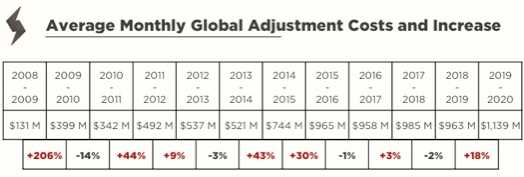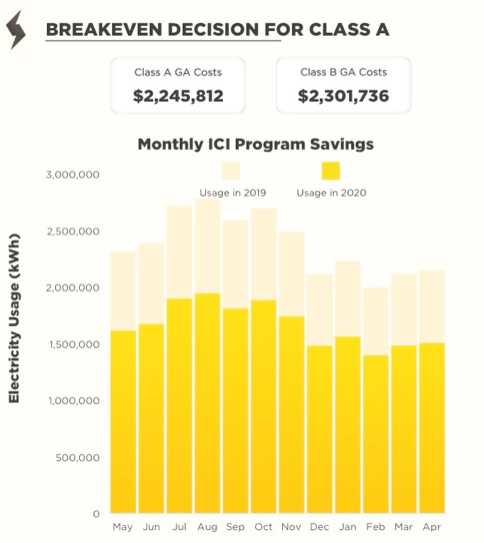
Global Adjustment has risen 18% this year. While some businesses in Ontario grapple with increased demand, others are seeing a drop in production. In this ‘new normal’ it is time to evaluate which offers more savings Class A or Class B?
The New State of Affairs
Right now, ‘Corona Chaos’ is the only game in town, as the pandemic throws businesses and industries for a loop, upending normal operating procedures across the board. One under reported way that these uncertain times are impacting businesses is energy pricing.
As businesses look to shore up their bottom lines, many are overlooking the potential savings that stand to be gained from changing how they participate in the IESO’s Industrial Conservation Initiative (ICI).
Reduced demand due to the impact of COVID-19 has changed the energy profile of the entire province, and of course many businesses. Energy strategies need to be updated in order to reflect this new state of affairs.
In particular, companies need to decide whether they are willing to continue as Class A participants in Ontario’s ICI program or whether it is better to opt out and switch to Class B instead.
Changes in your energy usage could mean that switching from Class A to B could save you money.
If your business has seen a reduction in activity due to COVID-19, then the corresponding changes in your energy usage could mean that switching from Class A to B could save you money. The crux of the matter comes down to how both classes are billed. Class A participants are billed based on their usage as a percentage of total system usage.
In other words, if your business uses 1% of Ontario’s energy demand, then you are billed for 1% of the province’s Global Adjustment (GA) fee.
Conversely, Class B businesses are simply billed based on their usage, so large commercial and industrial customers can save money by opting into Class A if what they would pay in usage fees is higher than paying their respective share of the total GA fee.
From Point A to Point B
The Global Adjustment rates you pay are based on your energy usage last year. This means with the new assessment period about to begin (May 1), your energy bill for 2020 will be based on your 2019 usage. Given the exceptional economic circumstances we are currently experiencing, being billed for a normal year’s worth of energy in a slower economy is going to cause problems.


Many businesses are closed or operating at reduced capacity, which means that overall energy demand is lower.
Class A participants now find themselves in the unenviable position of accounting for a higher (relative to everyone else) percentage of total usage, which means higher GA-related costs.
For instance, if your business normally represents 1% of Ontario’s usage, it could now account for 1.5% of total use, even if you’re experiencing lower energy use, because so many businesses have shut down all together. There are simply less to share the costs.
Class A participants are now responsible for higher Global Adjustment related costs.
The Class A versus Class B balancing act is further complicated by the fact that GA costs are very volatile and change monthly. This is added uncertainty, especially these days: for the 2019-2020 assessment period (May 2019 to April 2020) GA costs have already risen 18% (see below).
Example Scenario
The break-even point is determined by examining usage during 2019 Peak Hours and examining what level of usage drop in 2020 would equal the same costs or less under Class B billing.
In the scenario presented below, should this business anticipate a near 30% reduction in energy usage then Class B costs become comparable. Therefore, should the business expect production to drop by more than 30% over the course of the next year, it would be recommended to opt-out of Class A.

Switching to Class B could lead to significant savings, especially if your business is expecting lower usage than the previous year. It is important to know whether you’ve reached a break even point where staying in Class A starts costing more than if you switched to Class B.
The opt-in deadline for Class B is June 15th, so if you are interested in switching classes, we invite you to utilize EnPowered’s free bill analysis service to help you get from A to B on whether switching from Class A to B is right for your business.




